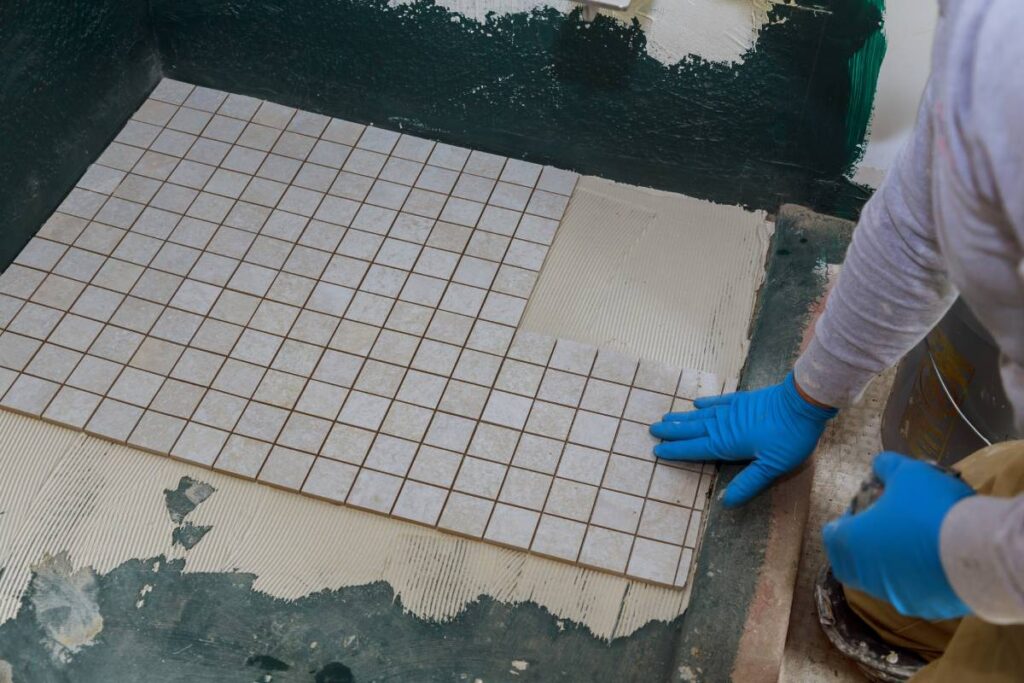
Tiles are a great choice for flooring in places like bathrooms and kitchens, offering both style and durability. However, they can be pricey. The overall cost of tiling varies depending on factors such as the size of the project, the type of tiles you choose, and local tiling rates. To get an idea of costs for your project, you can use our tiling cost calculator.
Wondering about the cost of installing floor tiles in Australia? This guide will give you the essential information you need before requesting quotes from tilers.
The cost of tiles in Australia can vary depending on various factors. Typically, basic ceramic tiles can range from $20 to $50 per square meter, while higher-end options like porcelain or natural stone tiles may cost between $50 to $150 or more per square meter. However, these prices are just for the tiles themselves and don’t include additional expenses like installation or other materials needed for the job.
When considering tile costs, it’s essential to think about the type of tile you want, the size of the area you’re tiling, and any additional materials or labour required. It’s also a good idea to shop around and compare prices from different suppliers or retailers to ensure you’re getting the best deal possible.
Ultimately, the total cost of tiling a space will depend on your specific requirements and preferences. If you’re unsure about pricing or need help estimating costs for your project, it’s advisable to consult with a professional tiler or contractor who can provide more accurate information based on your needs.

Calculating ceramic tile installation costs involves considering several factors. Here’s a basic guide to help you estimate:
Once you have all these factors accounted for, you can calculate the total ceramic tile installation cost by adding up the costs of materials, labour, and any additional expenses. It’s always a good idea to add a buffer for unexpected costs or contingencies. Getting multiple quotes from contractors or installers can also help you ensure you’re getting a fair price for the job.

Wondering about tile installation labour costs in Australia? It’s wise to enlist a professional for this task. Tilers commonly charge by the square meter or per hour.
Typically, the average tiling cost ranges from $40 to $50 per square meter, though this can vary widely, spanning from $30 to $150. For more intricate installations, expect prices in the $100 to $150 range. Hourly rates may also apply, ranging from $45 to $100.
If you’re dealing with existing tiles that need removal, anticipate an additional cost ranging from $20 to $50 per square meter, contingent on tile type.
Absolutely. Here’s a breakdown of the average tiling costs across various states:
Keep in mind that labour rates tend to be higher in major cities. Hiring a tiler in Sydney or Melbourne will likely incur higher costs compared to suburban or regional areas.

Several factors can influence tile installation costs. Here are some key ones to consider:
Considering these factors and discussing them with your installer or contractor can help you get a more accurate estimate of tile installation costs for your project.
Tilers’ licensing requirements can vary depending on your location and the project’s value. Typically, if a tiler has been consistently working in your area for several years, they likely have a solid reputation for delivering quality work that lasts.
Before making your decision, compare the quality of previous jobs done by different tilers. If possible, visually inspect these projects. If not, ask for references and reach out to them directly. This can help you feel confident in selecting a trustworthy tiler.